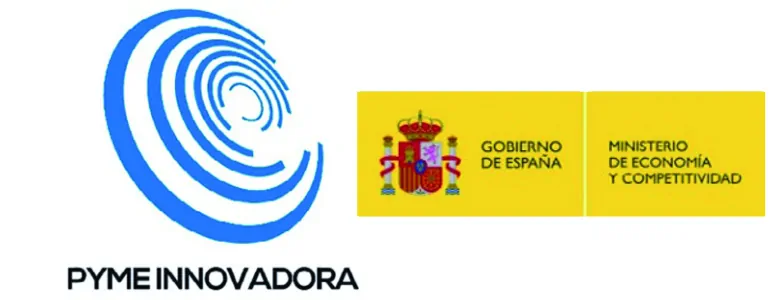
HORIZON EUROPE

 Europeo
Europeo
ExpectedOutcome:Projects are expected to contribute to the following outcomes:
Develop more efficient manufacturing processes to increase market share increase for products with functional surfaces that contribute to competitiveness and a transition to green and sustainable production flows;Significant reduction of the environmental footprint for surface treatments;Uptake of treatment technologies in applications for a sustainable society, targeting reductions in energy use and environmental footprint.
Scope:Surface treatments are an integral part of any manufacturing process. Surface treatments include many disciplines, such as painting/coating/printing (spray, powder, dip coating, inkjet etc.), plating/implantation (electroplating, vacuum plating/coating, etc.), thermal treatments (annealing, thermo-chemical processes, etc.), laser-based treatments (annealing, texturing, etc.), additive manufacturing, micro manufacturing (micro electrical discharge machining, micro milling, etc.) chemical and electrochemical treatments (anodizing, electropolishing, chemical deposition, etc.), biochemical treatments, etching (wet etching, plasma/dry etching, also for texturing...
ver más
ExpectedOutcome:Projects are expected to contribute to the following outcomes:
Develop more efficient manufacturing processes to increase market share increase for products with functional surfaces that contribute to competitiveness and a transition to green and sustainable production flows;Significant reduction of the environmental footprint for surface treatments;Uptake of treatment technologies in applications for a sustainable society, targeting reductions in energy use and environmental footprint.
Scope:Surface treatments are an integral part of any manufacturing process. Surface treatments include many disciplines, such as painting/coating/printing (spray, powder, dip coating, inkjet etc.), plating/implantation (electroplating, vacuum plating/coating, etc.), thermal treatments (annealing, thermo-chemical processes, etc.), laser-based treatments (annealing, texturing, etc.), additive manufacturing, micro manufacturing (micro electrical discharge machining, micro milling, etc.) chemical and electrochemical treatments (anodizing, electropolishing, chemical deposition, etc.), biochemical treatments, etching (wet etching, plasma/dry etching, also for texturing).
While the integration of these treatment technologies into a manufacturing line has been well reported, the technologies as such need to be adapted for each particular profile. In addition, with progressively more complex and customised requirements on shape, material and functionality, the demands on efficient and flexible surface treatments are increasing. In a transition towards a sustainable production, with a substantially lower environmental footprint, the demands are even higher.
The projects under this topic should address the following:
Develop new surface treatments specifically targeting and enabling end-products with the purpose of reducing the end-products’ energy usage and/or environmental footprint. This may include co-design of product geometry and surface properties;Use of innovative production technologies for further functional integration and miniaturisation in order to reduce environmental footprints and resource use of products;Integrate the new surface treatments in a manufacturing line for profiles with complex shape or multimaterial content, with clear metrics on its efficiency during operation;Develop new business models and strategies for the uptake of these new technologies and with clear objectives on how to expand the uptake to other sectors and other applications. Proposals submitted under this topic should include a business case and exploitation strategy, as outlined in the introduction to this Destination.
Research must build on existing standards or contribute to standardisation. Interoperability for data sharing should be addressed. Additionally, a strategy for skills development should be presented, associating social partners when relevant.
All projects should build on or seek collaboration with existing projects and develop synergies with other relevant European, national or regional initiatives, funding programmes and platforms.
This topic implements the co-programmed European Partnership Made in Europe.
Specific Topic Conditions:Activities are expected to start at TRL 4 and achieve TRL 6 by the end of the project – see General Annex B.
Cross-cutting Priorities:Social sciences and humanitiesArtificial IntelligenceCo-programmed European PartnershipsDigital Agenda
ver menos
Características del consorcio
 :
La ayuda es de ámbito europeo, puede aplicar a esta linea cualquier empresa que forme parte de la Comunidad Europea.
:
La ayuda es de ámbito europeo, puede aplicar a esta linea cualquier empresa que forme parte de la Comunidad Europea.
Características del Proyecto
Gastos relacionados con el personal que trabaja directamente en el proyecto basado en las horas efectivas dedicadas, basado en el coste empresa y ratios fijos para determinados empleados como los dueños de la compañía.
Pagos a terceros externos para realizar tareas específicas que no pueden ser realizadas por los beneficiarios del proyecto.
Incluyen la adquisición de equipos, amortizaciones, material, licencias u otros bienes y servicios necesarios para la ejecución del proyecto
Gastos diversos como costes financieros, certificados de auditoría o participación en eventos no cubiertos por otras categorías
Gastos generales no asignables directamente al proyecto (como electricidad, alquiler u oficina), calculados como un 25% fijo sobre los costes directos elegibles (excepto subcontratación).
Características de la financiación
Información adicional de la convocatoria
Otras ventajas
Ayudas Similares

| Abierta

| Próximamente

